The best and worst of Elgato's streaming tech
We break down Elgato’s streaming tech, which ones you need, and how to set them up
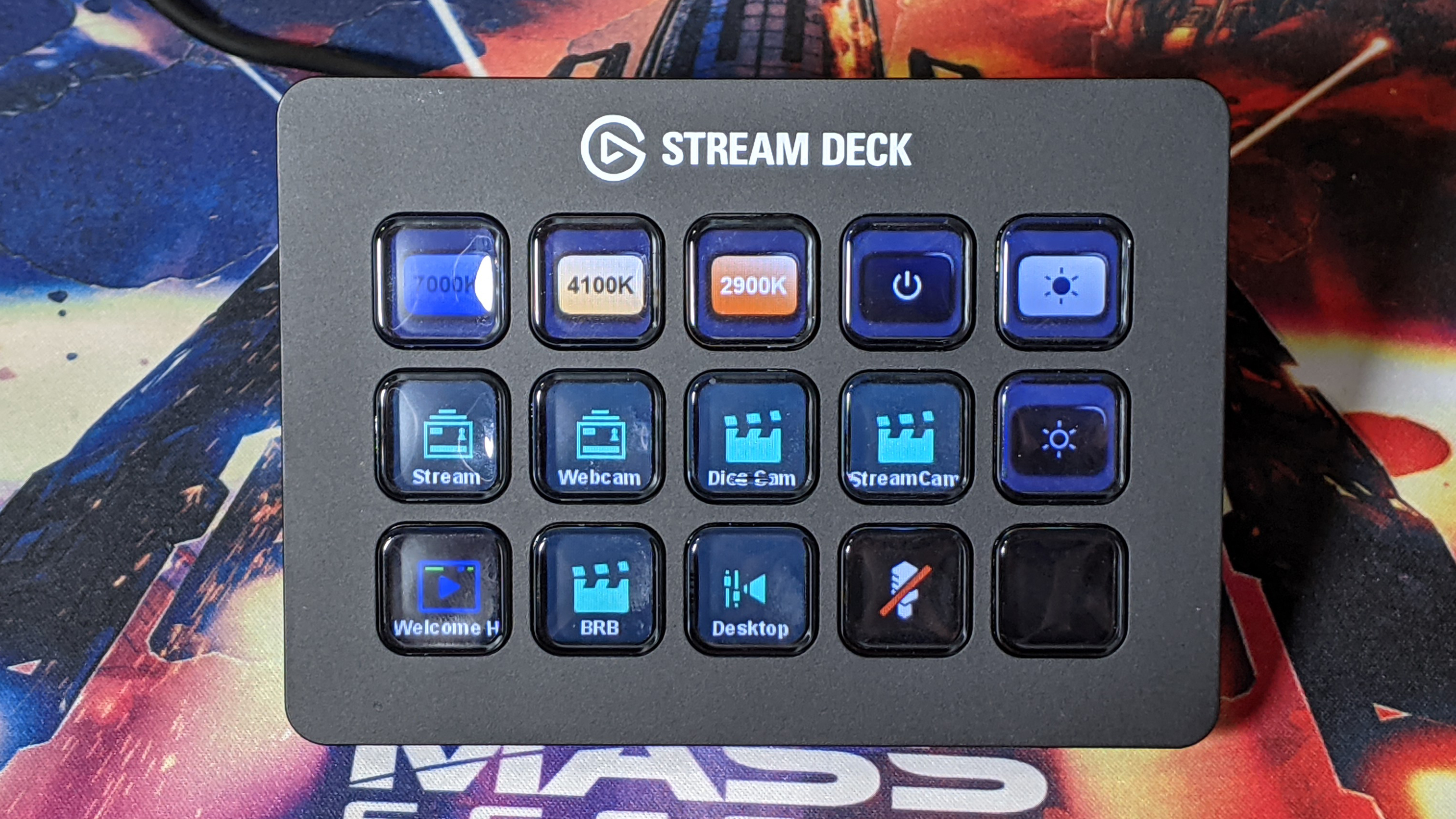
Elgato sent me a boatload of equipment for streaming that I’ve been testing over the past few weeks. I’m going to give you a quick tour on the good and the bad of each, and how to set up these products for your own streaming rig.
Of course, Elgato isn’t the end all be all for streaming tech, so I’ll suggest some alternatives for certain Elgato products that are either too expensive or aren’t up to par with other options on the market.
Here’s Elgato streaming tech reviewed and how to set up all of Elgato’s tech for your sick, new streaming rig.
- See the best PC games and best Xbox Game Pass PC games to play now
- These are the best Xbox Series X games and best PS5 games so far
- See our Xbox Series X review, PS5 review and best virtual tabletop software
Elgato 4K60 Pro
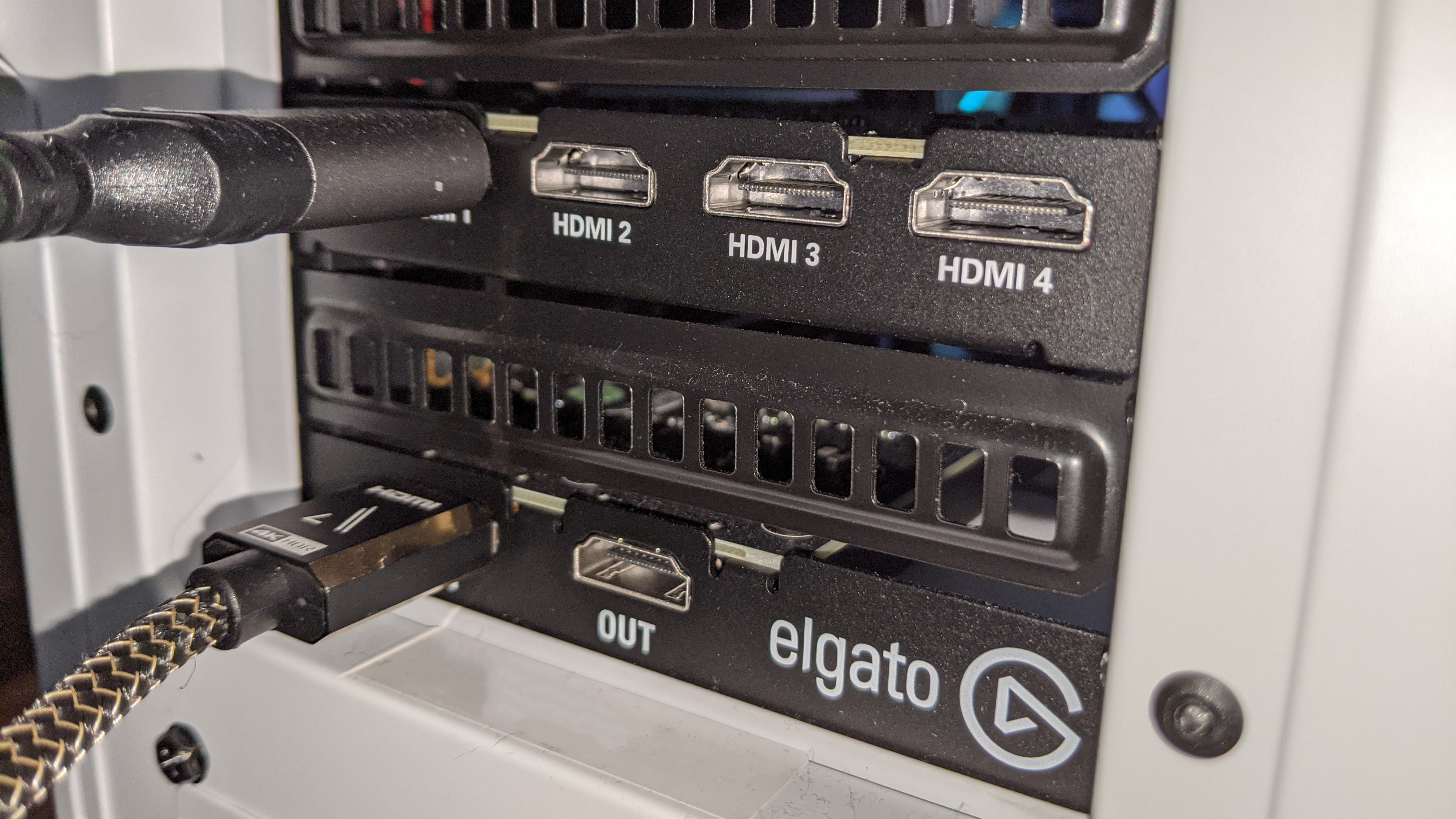
First things first, let’s set up the actual game-capture device. The Elgato 4K60 Pro ($250) is specifically built for a PC setup, but you can easily snag a capture device like the 4K60 S+ ($399) or the HD60 S+ ($199) for your laptop.
To set up the Elgato 4K60 Pro, you need an open PCIe x4/x8/x16 slot, an Nvidia GeForce GTX 10-Series GPU or better, a 6th Gen Intel Core i7 CPU / AMD Ryzen 7 or better, and Windows 10 (64-bit). Depending on your chassis, you’ll have to unscrew a few of the back panels to make room for the ports.
Once it’s connected, download the 4K Capture Utility app. This is where you’ll capture and save your gameplay footage if you’re not live-streaming. You can adjust the streaming format from its resolution to frame rate, the HDMI color range, the input EDID (Extended Display Identification Data) mode, and EDID (interal) resolution. The Picture tab also lets you adjust the brightness, contrast, saturation and hue. Once you figure out what your capture will look like, you can adjust the recording location and video coder settings as well as the microphone settings.
Finally, you can connect your console with an HDMI that feeds into the IN port, and if you plan on viewing it on a different device, you’ll have to connect a monitor or TV to the OUT port. I played Monster Hunter Rise with little to no lag in the 4K Capture Utility app. If you’re a console streamer, you’ll want this component.
Stay in the know with Laptop Mag
Get our in-depth reviews, helpful tips, great deals, and the biggest news stories delivered to your inbox.
Elgato Cam Link Pro
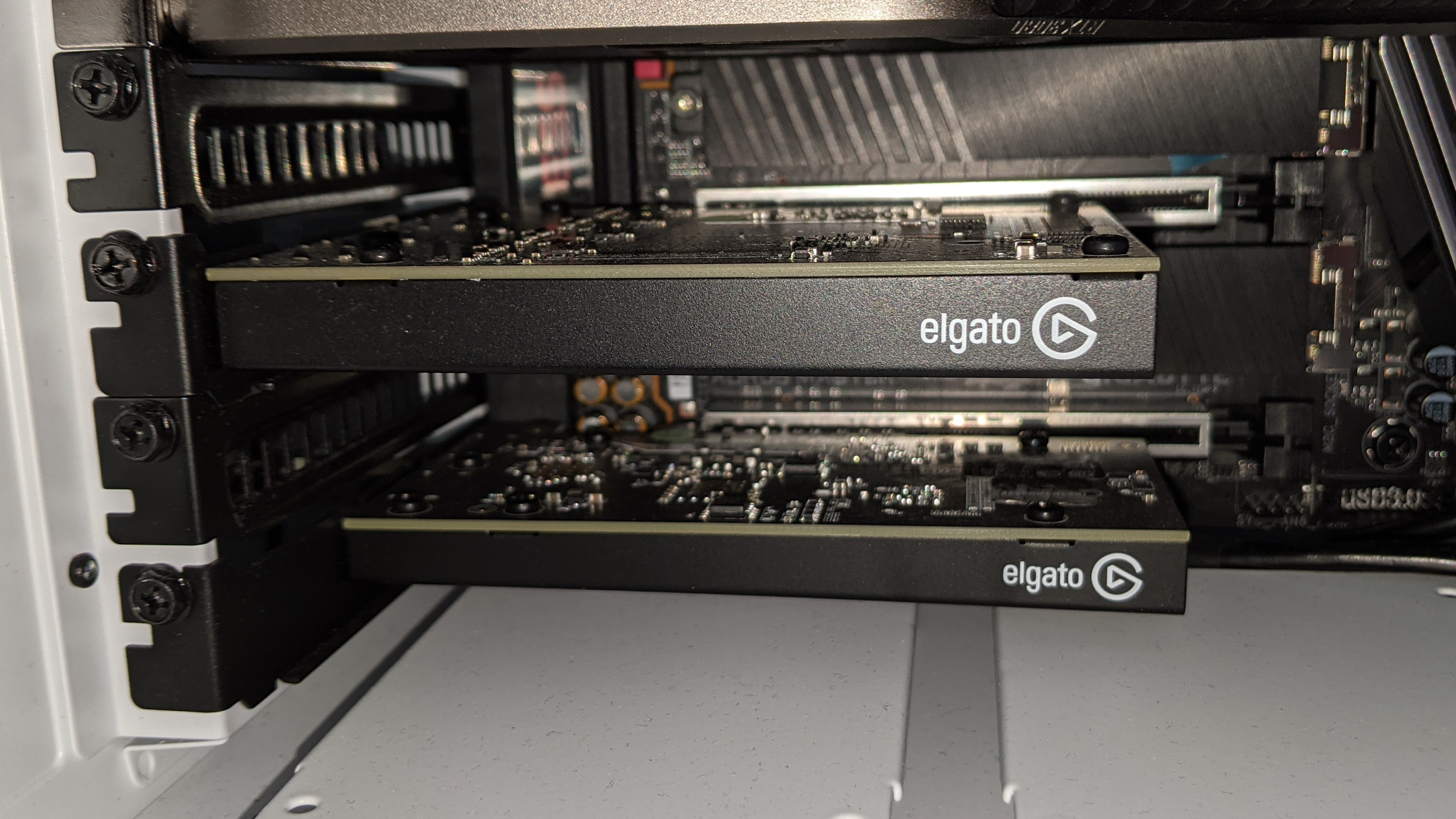
If you’re going for a multiple camera setup and are using DSLRs and mirrorless cameras, you’re going to need the Elgato Cam Link Pro ($359). If you have a laptop, check out the Cam Link 4K. Remember, you need special cables to connect your camera to this, but first things first.
Just like the 4K60 Pro, to set up the Elgato Cam Link Pro, you need an open PCIe x4/x8/x16 slot, an Nvidia GeForce GTX 10-Series GPU or better, a 6th Gen Intel Core i7 CPU / AMD Ryzen 7 or better, and Windows 10 (64-bit). Depending on your chassis, you’ll have to unscrew a few of the back panels to make room for the ports.
The next thing you’ll need are those special cables I mentioned. So it’ll be either HDMI to mini-HDMI or HDMI to micro-HDMI. Yes, there’s a difference and it’s needlessly confusing. I ordered the wrong one for my camera, and the one you’ll need will depend on what kind of camera you own.
There are a few other things you should worry about if you’re using a DSLR or mirrorless camera. First thing is power. You’ll likely need to hook up a dummy battery into your camera that connects to an outlet so it stays charged. (Some cameras can record while being charged via a USB-C input, but you won’t get the full quality from your camera). The second thing is overheating. Your camera may not overheat, but I know mine does (Fujifilm X-T200), so I’ve solved this by placing a small fan in its direction. I haven’t had overheating problems since (except when I forget to turn the fan on).
Once all of that is set up, you can either download and set up the 4K Capture Utility app, or you can get your camera feed through any streaming app like OBS Studio or Streamlabs OBS. Regardless, your camera is now set up like a webcam source coming through your PC.
Overall, the Elgato Cam Link Pro has been an excellent addition to my streaming set up, and I wouldn’t be able to look as good on camera without it.
Elgato Ring Light

It’s one thing to have a nice camera, but it’s another entirely to have great lighting, which the Elgato Ring Light ($199) will provide.
The Ring Light features a padded clamp that attaches to the back of your desk, preferably behind your monitor if that’s where you’ll be looking. You can raise it with the Master Mount S poll and then screw in the Ring Light. Once that’s connected, you can hook up your camera to the ball mount with 1/4-inch screw. You can also buy a phone grip ($15) or heavy base ($40) if you can’t connect it to your desk. Then plug the power into the unit, and turn that sucker on. You can manually adjust the brightness with the buttons on the side, but there’s a better way to do that.
Download the Elgato Control Center and follow the instructions on screen in order to pair your Elgato Ring Light. This’ll involve holding the pairing switch until the light blinks three times, and then finally putting it in the on position. It’s a little confusing at first, but once you’re connected, you’re all set. Well, sort of. I’ve encountered several instances where I had to reconnect my Ring Light because it disconnected for no apparent reason, but it’s not too much trouble.
However, when it’s connected, you can turn the light on and off via your computer and you can also adjust the tint of the lighting, from 7000K (cool) to 2900K (warm).
Lighting is essential, and the Elgato Ring Light is an excellent assistant, but it can be pricey for those on a budget.
Elgato Facecam
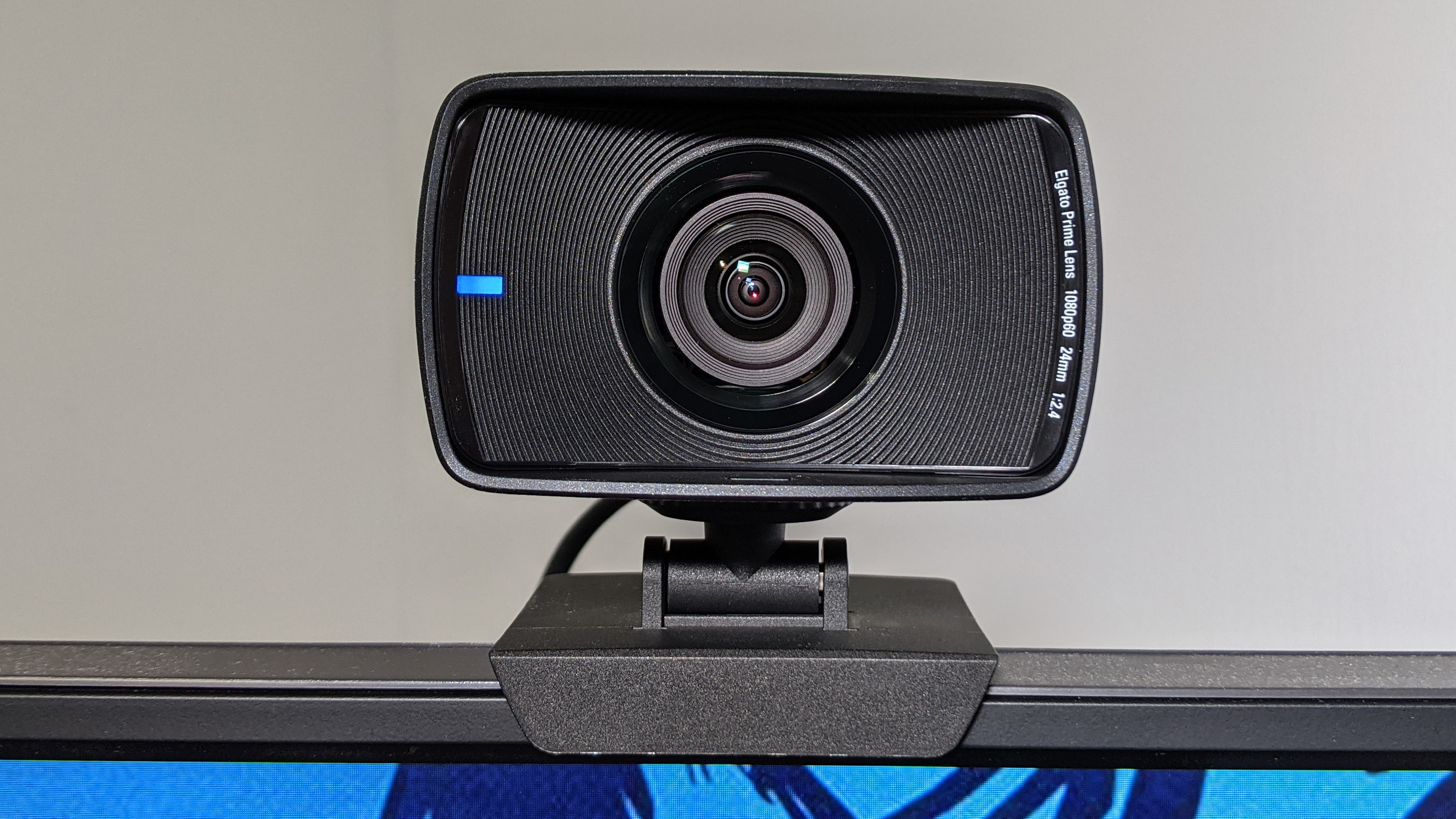
Elgato makes some amazing streaming tech, but the Elgato Facecam is not among that list. The Elgato Facecam features a 1080p resolution at 60 frames-per-second video, a seamless privacy cover, a sturdy design and a useful companion app. But it’s not worth $200 because there is no microphone on board and you'd expect 4K resolution at this price. Also, photos and videos can get noisy and the included cable is frustratingly short.
But if you’re picking one up, it’s incredibly easy to set up. The USB Type-C port for power is located on the back, and the underside of the Facecam features the connector for the mount (can be detached and reattached to a tripod or Elgato Ring Light). You can use the L-shaped clamp to mount the webcam on a monitor. The first piece of the L can move up to 90 degrees and the second one can move up to 180 degrees.
Elgato provides the Facecam with the Camera Hub, which is pretty neat and runs smoother than some of the other camera software I’ve tested. You can adjust your zoom/FOV, contrast, saturation and sharpness. There’s an automatic setting for the exposure settings, otherwise, you can adjust the metering between being center-weighted or average, and you can also adjust the shutter speed and ISO. There’s also an automatic white balance setting that you can manually adjust if you’re feeling brave. And then there’s the processing tab, which features settings for noise reduction and anti-flicker. It can also easily mirror your camera’s viewpoint.
I honestly recommend getting any other webcam, like the Razer Kiyo Pro. If you’re deeply invested in streaming, pick up a serious DSLR or mirrorless camera -- but keep in mind that a good one will run you at least $500.
Elgato Stream Deck MK.2
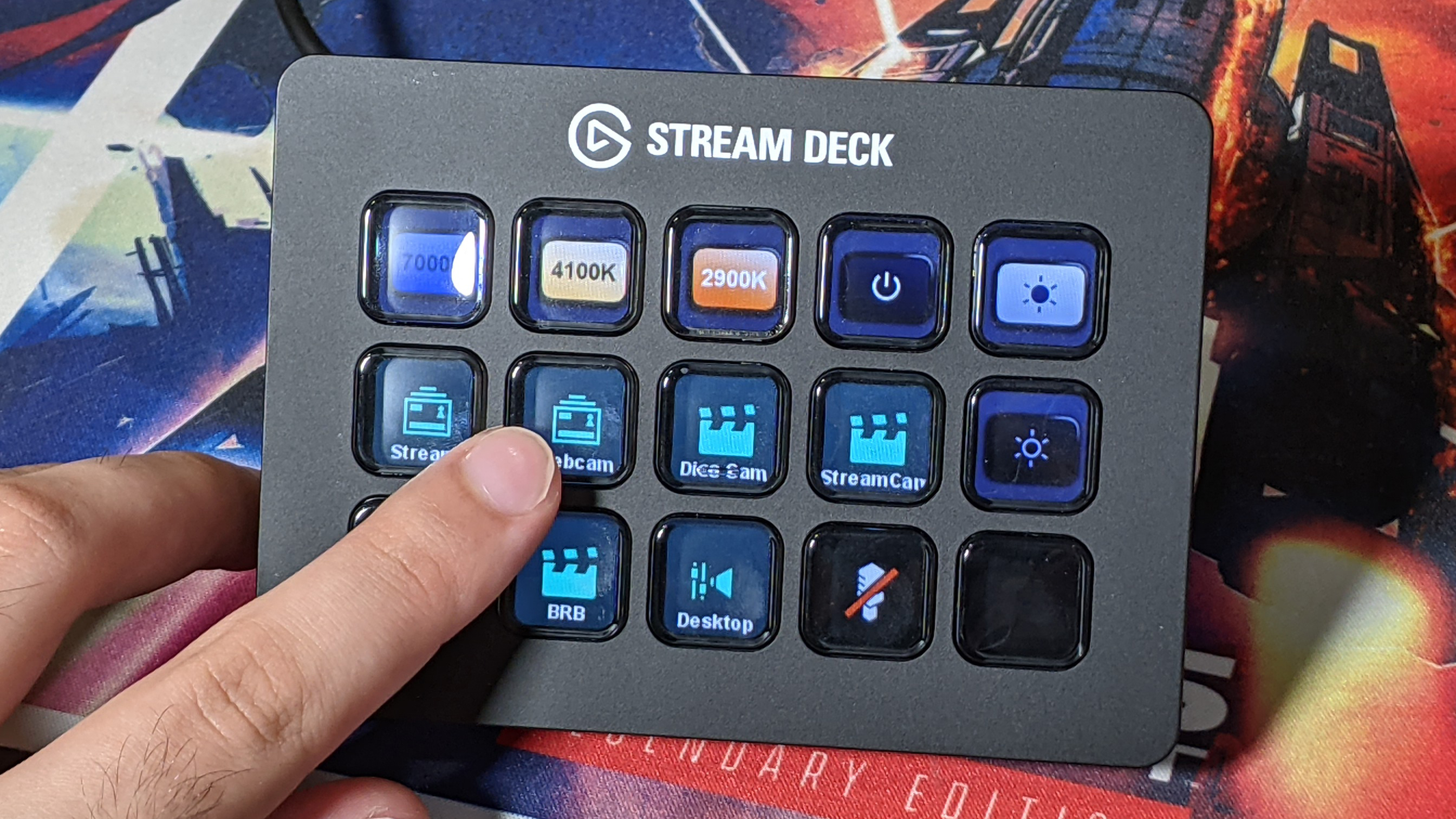
The Elgato Stream Deck MK.2 is one of my favorite pieces of tech because it brings all the elements of a streaming setup together. The Elgato Stream Deck MK.2 has a sleek design, is easily configurable, and is backed by clean software and a virtual store. It is a bit expensive, at $150, and I wish the text fit better on the LCD keys.
Elgato’s Stream Deck software is surprisingly clean and easy to use. Let’s go over the basics and then the more customizable features. First off, you start with your basic default profile of 15 keys, which you can use to assign different functions from, included apps like Elgato Game Capture, OBS Studio, Soundboard, Stream Deck, Streamlabs OBS, System, Twitter, Elgato Control Center, Voicemod and Twitch Studio.
As far as the Elgato-based ruleset goes, you can change scenes, record, screenshot, stream and add live commentary with Elgato Game Capture straight from your Stream Deck. With the Stream Deck itself, you can create folders, switch profiles, create a multi-action button and switches, enable a random action, activate a timer, adjust brightness and put to sleep. With your System settings, you can assign a button to launch a website, hotkey switch, hotkey, open an app, display text or assign a multimedia key.
There’s a lot of customization within the app, and thanks to the clean interface, it’s simple to understand what’s going on and how to make it all work seamlessly. And on top of the already included apps, you can add plug-ins, icons, music and sound effects from the Stream Deck Store.
That means all of the aforementioned tech can be hotkeyed and function via the Elgato Stream Deck MK.2. For example, the switches for my Ring Light, Facecam, 4K60 Pro, and Cam Link Pro are all on my Stream Deck, customized via Streamlabs OBS. The Elgato Stream Deck MK.2 is arguably the most vital piece of tech on this list.
Outlook
Becoming a professional streamer is expensive, and there’s no way around that. Yes, you can get your stream up and running with a cheap gaming laptop, a smartphone and some earbud microphones, but you’re not going to garner any attention when you’re competing with professionals.
You don’t have to get all of these products for a good stream, however. There’s a way to budget yourself, but remember, good lighting, a sharp camera and a clear microphone will go a long way in making your stream look exactly how you want it to.
You'll also need a really beefed-up PC or laptop. Seriously, you’re going to need a lot of power for streaming, so we recommend checking out our best gaming laptops page. Loop back to this page for more Elgato products that launch down the line.

Rami Tabari is the Reviews Editor for Laptop Mag. He reviews every shape and form of a laptop as well as all sorts of cool tech. You can find him sitting at his desk surrounded by a hoarder's dream of laptops, and when he navigates his way out to civilization, you can catch him watching really bad anime or playing some kind of painfully difficult game. He’s the best at every game and he just doesn’t lose. That’s why you’ll occasionally catch his byline attached to the latest Souls-like challenge.
